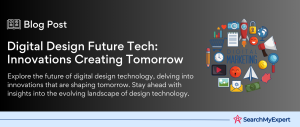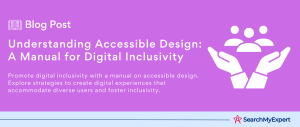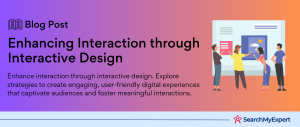The Impact of VR and AR in Digital Design
Virtual Reality (VR) and Augmented Reality (AR) are reshaping our world, revolutionizing industries from gaming to healthcare. They are not just futuristic concepts but real-world technologies, influencing how we interact with digital environments.
What are VR and AR?
- Virtual Reality (VR) creates a digital environment that replaces the user’s real-world environment. Immersion is key; VR transports users to entirely new worlds, using headsets and sometimes body suits or gloves for a fully immersive experience.
- Augmented Reality (AR), on the other hand, layers digital enhancements onto the real world. It superimposes graphics, sounds, or other sensory stimuli onto our natural environment, often through smartphones or AR glasses.
Core Functionalities and Differences
- VR’s Immersive Nature:
VR is all about creating a complete virtual environment. It’s immersive, making you feel like you’re in another world. - AR’s Enhancement of Reality:
AR enhances your current environment. It adds to, rather than replaces, your real-world experience.
Growing Prominence Across Industries
- Gaming and Entertainment:
Both technologies have had a significant impact on gaming and entertainment, offering new levels of engagement. - Healthcare: In healthcare, VR and AR are used for training, treatment, and rehabilitation.
- Education:
These technologies provide interactive and immersive learning experiences. - Retail:
AR, in particular, has revolutionized shopping experiences with virtual try-ons and in-store navigation.
Impact on Digital Design
- The influence of VR and AR on digital design is profound. Designers must now think beyond flat screens and traditional interfaces.
- There is a growing need for designs that are not only visually appealing but also immersive and interactive.
- This shift is leading to new challenges and opportunities in the field of digital design.
Redefining Immersive Experiences
Transforming Interaction with VR
- Fully Immersive 3D Environments: VR’s most compelling feature is its ability to create fully immersive 3D environments. This is more than just a visual experience; it’s an interaction with a
new reality. - Interacting with Virtual Objects:
In VR, users can manipulate virtual objects. They can walk through virtual spaces, change elements, and truly interact with the environment. This level of interaction is unparalleled in any other digital medium.
Blending Realities with AR
- Overlaying Digital Elements:
AR takes the real world and overlays it with digital elements. It blurs the line between what’s real and what’s computer-generated by enhancing what we see, hear, and feel. - Enhanced Real-World Experience: Unlike VR, AR doesn’t create a new world; it makes the existing one more interactive and informative. This integration with the real world opens up new possibilities in digital design.
VR and AR in Digital Design
- Virtual Prototyping:
Designers are using VR to create and test prototypes in a virtual environment. This is especially useful in automotive, architectural, and product design, where physical prototyping can be costly and time-consuming. - Immersive Product Presentations: VR enables designers to present products in a fully immersive environment. Customers can experience a product in 3D, exploring every aspect as if it were right in front of them.
- AR-Powered Furniture Placement Apps:
AR is revolutionizing interior design. Apps like IKEA Place allow users to see how furniture would look and fit in their own space, greatly enhancing the shopping experience.
Through VR and AR, digital design is no longer confined to the limits of a screen. Designers are empowered to create experiences that are more engaging, interactive, and closer to reality than ever before.
Transforming Design Workflow and Collaboration
Facilitating Real-Time Collaboration
- Virtual Meeting Spaces:
VR and AR create virtual spaces where designers and stakeholders can meet and collaborate, regardless of their physical location. This is more than a video call; it’s an immersive meeting experience. - Interactive Design Reviews:
With VR, stakeholders can walk through a design, interact with it, and provide feedback in real-time. This interactive review process can significantly enhance understanding and decision-making.
Rapid Prototyping and Testing with VR
- Beyond Physical Models: Traditionally, prototyping requires physical models, which can be costly and time-consuming to produce. VR changes this by enabling rapid prototyping in a virtual environment.
- Immediate Revisions and Testing: Designers can make changes and test different scenarios instantly in VR. This not only saves time but also allows for more creative experimentation.
AR in Design Education and Training
- Interactive Learning Experiences: AR offers unique opportunities in education and training. Students can learn about design principles through interactive AR experiences that overlay information and graphics onto real-world objects.
- Enhanced Understanding and Retention:
This hands-on approach makes learning more engaging and can improve understanding and retention of design concepts.
The integration of VR and AR into design workflows and education is not just a technological advancement; it’s a paradigm shift. These technologies offer new ways to create, collaborate, and learn, making the design process more efficient, engaging, and accessible.
Evolving Design Thinking and Storytelling
Pushing Boundaries with Spatial Storytelling
- Beyond 2D Constraints:
VR and AR allow designers to move beyond the two-dimensional constraints of traditional screens. They can now design in and for three-dimensional spaces. - Spatial Storytelling:
These technologies enable spatial storytelling, where the narrative unfolds in a space that the audience can explore. This creates a more engaging and memorable experience.
VR: A Tool for Empathy and Experience
- Empathy through Immersion:
VR’s immersive nature can evoke strong emotional responses. It places users in others’ shoes, fostering empathy and deeper understanding. - Understanding Different Environments:
VR can simulate different environments, from a busy city street to a remote village, allowing users to experience and understand diverse settings and perspectives.
Immersive Storytelling in Campaigns
Deeper Audience Connection: VR and AR campaigns can connect with audiences on a deeper level. By immersing them in a story, these campaigns create a powerful emotional connection.
Examples:
- VR Tourism Campaigns: Virtual tours of destinations offer a taste of the travel experience, enticing potential visitors.
- AR in Retail: Retailers use AR to create interactive campaigns where customers can virtually try products, blending storytelling with personalization.
- VR Educational Experiences: Educational programs use VR to bring history or science to life, making learning an immersive experience.
The evolution of design thinking and storytelling through VR and AR represents a significant shift. Designers are no longer just creators of visual content; they are architects of experiences that can profoundly impact emotions and perceptions.
Addressing Challenges and Considerations
Technical Limitations
- Hardware Accessibility:
One of the primary challenges is the accessibility of VR and AR hardware. High-quality VR headsets are often expensive, limiting widespread adoption. - User Interface Challenges: Designing user interfaces for VR and AR is complex. These interfaces must be intuitive and natural to navigate, which is not always easy to achieve in a 3D space.
Ethical Considerations
- User Privacy:
As VR and AR technologies collect a significant amount of personal data, including physical movements and environmental data, user privacy becomes a crucial concern. - Data Security: The security of this data is paramount. There’s a risk of sensitive information being misused or hacked.
- Psychological Impacts:
Prolonged usage of VR can have negative psychological impacts, such as disassociation or discomfort. Designers need to consider these potential effects when creating VR experiences.
Importance of User-Centered Design
- Designing for Users: Effective VR and AR experiences must be grounded in user-centered design principles. This approach ensures that the technology serves the user, not the other way around.
- Balancing Innovation and Usability: While pushing the boundaries of what’s possible, designers must also ensure that their creations are accessible, usable, and beneficial to the intended audience.
Addressing these challenges and ethical considerations is vital for the sustainable development of VR and AR technologies. It’s a balancing act between harnessing the potential of these technologies and ensuring they are used responsibly and effectively.
Looking Ahead: Future Potential and Possibilities
Emerging Trends in VR and AR
- Mixed Reality (MR): Mixed Reality combines elements of both VR and AR, merging the real and virtual worlds to produce new environments where physical and digital objects co-exist and interact in real-time.
- Haptic Feedback Technology:
This technology adds a sense of touch to VR and AR experiences, allowing users to ‘feel’ virtual objects, greatly enhancing realism and immersion. - Hyper-Personalization: These advancements could lead to hyper-personalized experiences in digital design. Imagine a world where every digital interaction is tailored to the individual’s preferences, behaviors, and context.
- Seamless Real and Virtual Integration: The future promises even more seamless integration between the real and virtual worlds. The distinction between what’s real and what’s virtual will become increasingly blurred, creating experiences that are more engaging and lifelike.
Transformative Potential in Digital Design
- The transformative potential of VR and AR in digital design is immense. As these technologies evolve, they will continue to redefine the boundaries of what’s possible in digital experiences.
- Their role in shaping the future of the industry is undeniable. They are not just tools for designers; they are gateways to new forms of creativity and interaction.
Summarizing the Impact of VR and AR on Digital Design
- Redefining Immersive Experiences: VR and AR have transformed digital design by creating fully immersive and interactive experiences, far beyond traditional 2D interfaces.
- Transforming Workflow and Collaboration:
These technologies have revolutionized design workflows, enabling real-time collaboration and rapid prototyping in virtual spaces. - Evolving Design Thinking and Storytelling: VR and AR push the boundaries of design thinking, enabling spatial storytelling and emotional engagement, providing unique perspectives and deeper connections.
- Addressing Challenges and Considerations:
While VR and AR offer immense potential, they also come with challenges, including technical limitations, ethical considerations, and the need for user-centered design. - Future Potential and Possibilities: Emerging trends like mixed reality and haptic feedback technology hint at a future where digital and physical realities are even more seamlessly integrated, offering hyper-personalized experiences.
Looking to the Future
The journey into VR and AR in digital design is just beginning. As these technologies continue to evolve, they promise to unlock even more exciting possibilities. The future of digital design is one where creativity knows no bounds, where designers can create experiences that are more immersive, interactive, and personalized than ever before. The potential is limitless, and the future is bright for VR and AR in digital design.
Conclusion
VR and AR are revolutionizing digital design, offering immersive experiences, transforming collaboration and prototyping, and evolving storytelling. As these technologies continue to advance, they hold the promise of further reshaping the future of digital design with limitless possibilities.
Innovate your digital appearance with Digital Design Firms.
Table of Contents
Toggle






